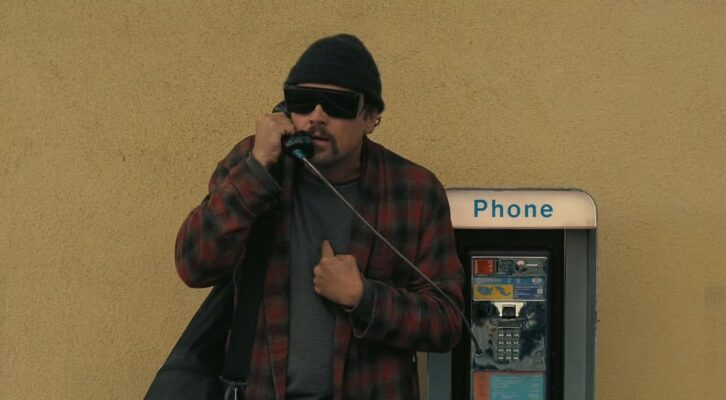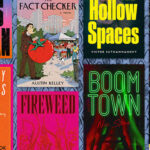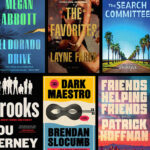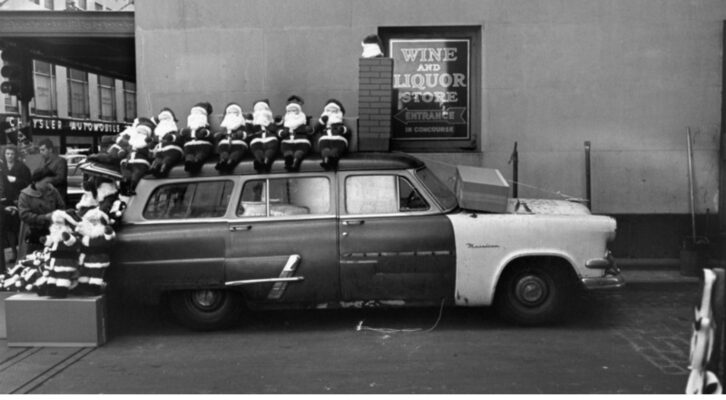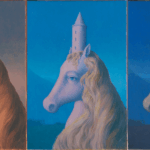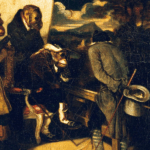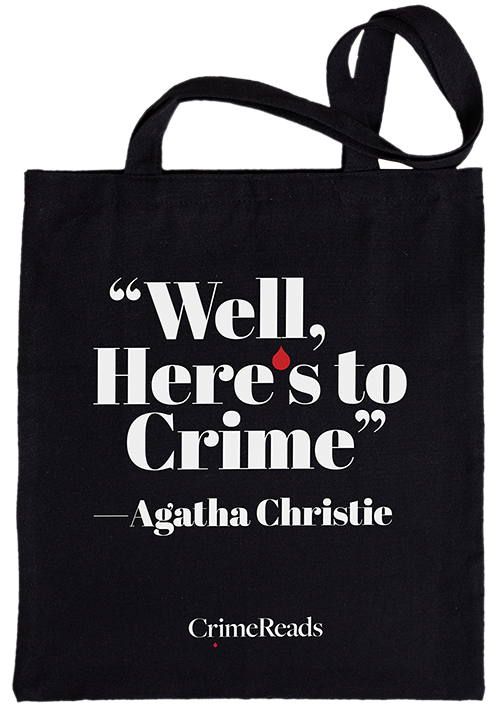Early on in The Talented Mr. Ripley by Patricia Highsmith, Tom Ripley, a young man of humble origins, travels to Italy to befriend rich kid Dickie Greenleaf. For a while they become inseparable. Tom thrills in his new life, a world of cocktails, beaches and Mediterranean sunshine.
One day, Tom and Dickie hire a motorboat. “It was about ten-thirty—that lazy hour after breakfast, when the whole long Italian morning lay before them.” The boat’s engine roars and soon they are out on the open sea, apparently about to go for a swim. When Dickie pulls down his pants, beneath which he’s wearing swimming trunks, Tom picks up an oar and beats Dickie around the head until he’s dead.
Here, Highsmith is playing a game of contrasts: the good life, the Italian Riviera—“San Remo was a blur of chalky white and pink”—the thrill of the motorboat streaking across the water, and Dickie’s “blue eyes smiling at the emptiness” just moments before he is clubbed to death while “shoving his trousers down.”
But perhaps most importantly of all, this brutal murder takes place in the daylight.
In most of the great crime/mystery novels, murders—or other malevolent misdeeds—take place under cover of darkness. Which makes sense. Darkness is advantageous to a killer hoping to conceal his or her identity. Furthermore, in the real world, most murders are committed during the nighttime—FBI data from 2018–2019, for example, shows violent crimes committed by adults peaking around 9 p.m., and dropping to to a low point around 5 a.m. So when it comes to violent crime, we are statistically safer in the daytime. Which is precisely why staging a violent act in daylight hours can unsettle a reader.
This can be seen most often in the Southern Gothic genre. Think of the shocking final act of Flannery O’Connor’s “A Good Man is Hard to Find.”
“Hiram and Bobby Lee returned from the woods and stood over the ditch, looking down at the grandmother who half sat and half lay in a puddle of blood with her legs crossed under her like a child’s and her face smiling up at the cloudless sky.”
Indeed, O’Connor is so keen for the reader to know there isn’t a cloud in the sky she mentions this fact five times in the last 2,200 words of the story.
Another example can be seen in Donna Tartt’s “The Little Friend.” (Am I the only person who thinks this is her best novel?) The story opens on Mother’s Day, the air filled with “a certain stormy cast of spring light,” when a nine-year-old boy, Robin, is found hanging from a tree.
Then there’s Sharp Objects by Gillian Flynn, in which the novel’s female victims have their teeth pulled out—creepy right? What’s also creepy is the fact the second girl goes missing in the middle of the day. We hear about this when journalist Camille Preaker, investigating the disappearances, visits the park where the girl was abducted. That’s where Preaker meets a talkative ten-year-old boy who tells her that his friend, James, witnessed what happened. “James was out here because of the sun. He’s not supposed to be in the sun, because his mom’s got skin cancer, but he does anyway,” the boy tells her. “James saw the woman take Natalie. It was just the two of them, and they were playing Frisbee, and Natalie missed and it went into the grasses by the woods, and the woman just reached out and grabbed her. Then they were gone. And James ran home.”
Here, Flynn deftly layers creepiness upon creepiness—the blunt simplicity of the young boy’s account, the skin cancer-induced fear of sunlight, the everyday detail of Frisbee in the park, the female kidnapper and, of course, a daytime abduction.
Because light is associated with truth, renewal, vitality and safety, when something terrible happens in the daylight hours, we might feel rocked to our core. The phrase “in broad daylight,” in fact, is only ever invoked to express something shocking. “She walked three blocks and made it home safely in broad daylight,” is neither a valid use of the phrase nor much of a story. But change this to: “The walk was only three blocks and yet she vanished in broad daylight…” and this time around, not only has the phrase been used correctly, but it’s also the beginning of an unsettling tale.
Thinking about all this led me to set the most brutal episode of my novel, “The Rabbit Club” on the merriest day in the Oxford calendar, its annual May Day celebration. Every year, the streets around Magdalen Bridge are thronged with a crowd welcoming the summer—morris dancers, women with flowers in their hair, students swigging from champagne bottles while dressed in ball gowns and tuxedos. Frequently the champagne-drinking young men jump off the bridge into the River Cherwell. And all of this while a choir sings from the rooftop of the ancient Magdalen tower high up above.
From the earliest moments of writing the novel, I knew that the singing would turn to screaming and the celebrations to sorrow. I also loved the additional meaning of May Day’s homophone: mayday!
Perhaps this subversive desire stems also from my own sense of horror when it comes to a particular form of daylight. Just days ago, in New York’s Hudson Valley, where I live, the mercury soared all the way to a hundred. Those disquieting digits, one zero zero, invoke a sense of terror in me. As a Brit living in America, I both fear and avoid the summer sunlight to almost vampiric levels.
It’s a fear that some of the best filmmakers also know well and have employed with gusto when adapting classic works of literature. Steven Spielberg’s “Jaws,” for example, hums with an underwater evil that can always be felt, but almost never seen, even in the middle of the day—just as its author, Peter Benchley, intended. The Coen brothers’ “No Country for Old Men” meanwhile, is entirely faithful to Cormac McCarthy’s masterpiece—with good reason. One of the most deeply unsettling scenes in the book takes place on a hot afternoon at a gas station where a psychopath turns up and gives the man behind the counter an ultimatum—heads or tails? The wrong choice means death, the right one survival. You can see beads of sweat glisten on the man’s face as he gulps his answer.
Anthony Minghella also knew this trick. And perhaps that’s why he upped the ante from Highsmith’s original work.
On the afternoon that Tom murders Dickie, she describes the sky as wearing “the kind of greyness that would not disappear all day.” But Minghella correctly reasoned that overcast clouds would dull the brutality of the scene. And so, in his exceptional 1999 adaptation, the two men are bathed in sunlight—all the better to see the splatters of scarlet blood pouring from Dickie’s wounds, staining the boat and spattering Tom’s face as he repeatedly strikes the head of the only man he has truly loved.
I’d like to think Highsmith would have approved of the change.



